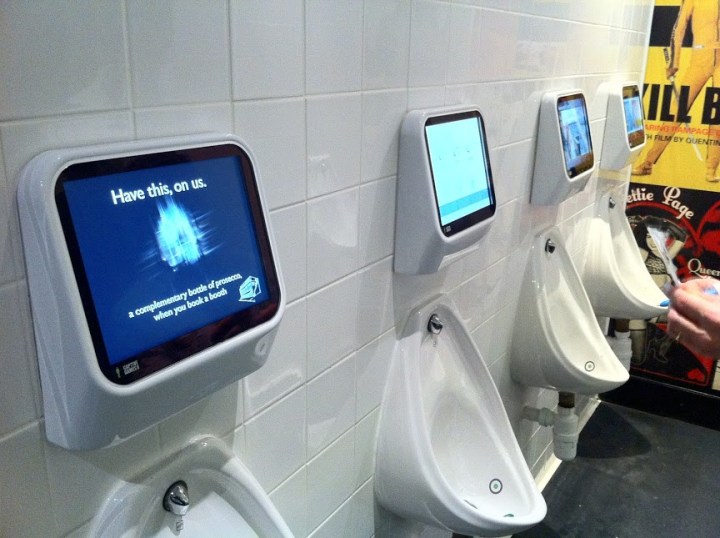
This truly practical breakthrough was recently presented at the 68th Annual Meeting of the APS Division of Fluid Dynamics, where Randy Hurd gave what must have been a scintillating explanation of how his graduate advisor and a number of others at Utah State had dealt with the age-old problem of urine bouncing out of a urinal. “Since the mid-nineteenth century, both enlisted and fashion-conscious owners of khaki trousers have been plagued by undesired speckle patterns resulting from splash-back while urinating,” begins the group’s abstract, which concluded, “We propose improved urinal insert designs based on our experimental data in hopes of reducing potential embarrassment inherent in wearing khakis.”
The reason your pee tends to come right back atcha when using a urinal is that the stream tends to devolve into smaller, more unpredictable droplets as they leave the body. When these droplets hit the surface of a urinal, they end up with a mind of their own. While you can adjust your stance or your stream’s angle to try to reduce these effects (recommendations include standing closer to the urinal or aiming towards the lower back portion of the receptacle), sometimes when you gotta go, you don’t have time to think about all these logistics.
So the Utah State team developed an insert that borrows from nature’s marvels (because that’s the best way to address nature’s calls). Inspired by a super-absorbent moss, syntrichia caninervis (or Tortula Moss), the team made use of a carbon nanotube structure known as Vantablack. Vantablack is famous for letting light in but not letting any of it leave, making it the “world’s darkest material.” But in its urinal application, instead of taking light as its prisoner, it apprehends pee.
Featuring a veritable forest of miniscule pillars, the Vantablack insert traps urine, solving the splashback problem. But researchers Tadd Truscott and Hurd aren’t stopping there. “While we find the connection to urinals interesting, we are confident that the scientific community will have interest in the interaction between the splashing droplet and the pillars,” they told Gizmodo. So watch out, world. Who knows what this team will accomplish next?


